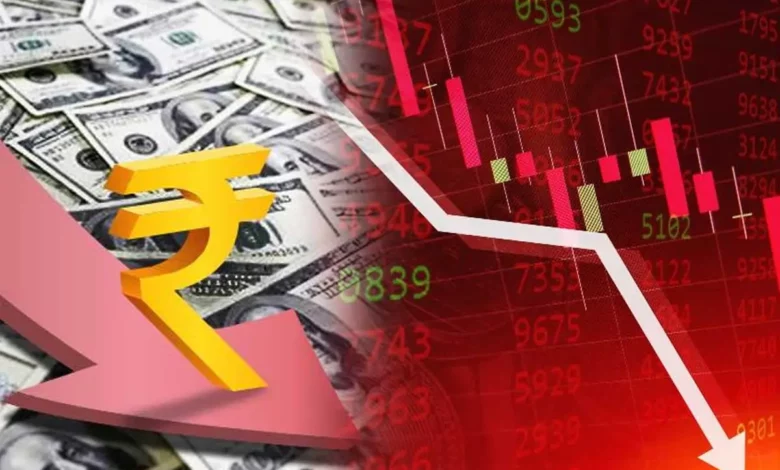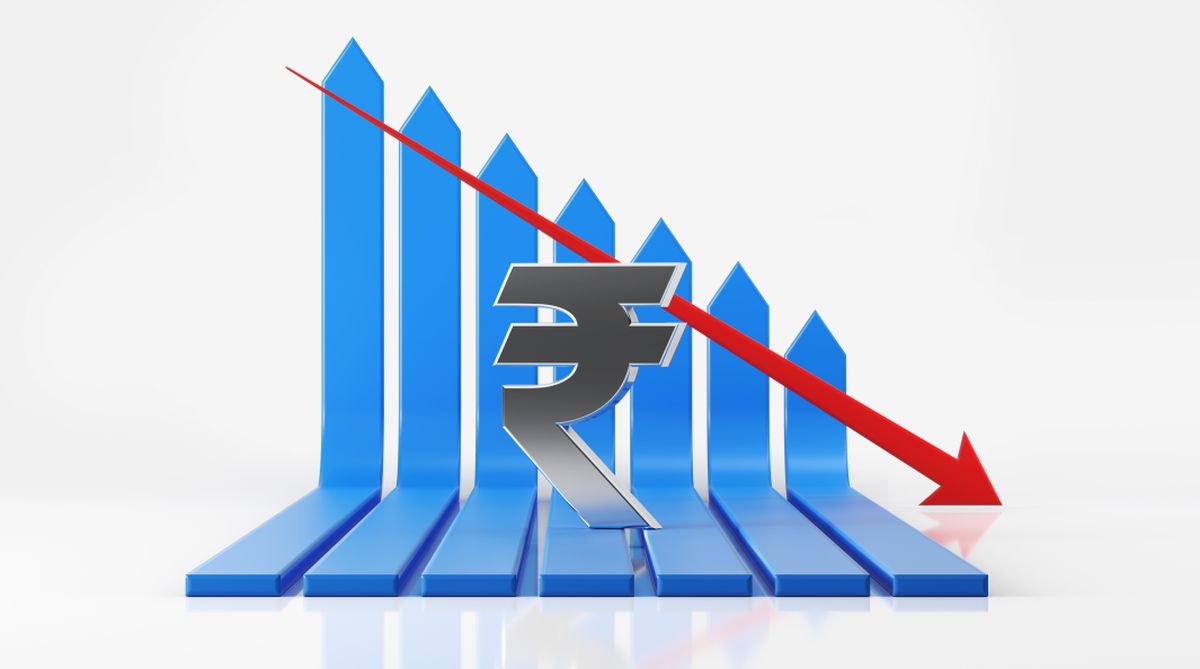Indian Rupee hits 80 per dollar

Indian Rupee hits 80 per dollar.
For the first time, the dollar to rupee exchange rate has touched 80 per dollar and is expected to touch 81 per dollar soon. In the past, the rupee used to be between 70 per dollar, but in recent times, steady currency depreciation has been seen.

The value of the rupee in a day keeps on fluctuating. Yesterday, 1 dollar was equal to 79.88 Indian rupees, which was expected to be 80 per dollar. Today, precisely what happened was expected. Now 1 dollar has touched 80 dollars. Experts are saying that soon 1 dollar will cross 80 rupees. The rupee had recorded a new low 26 times since the Russia-Ukraine war began.
How do 80 rupees per dollar affect?
You must be wondering what it means when we say that 1 dollar equals 80 rupees. So let’s analyze its effects;
- Effect on Imports
The importers used to pay in dollars in exchange for a rupee. So whenever the currency depreciates, importers face a heavy loss.
For example: When 1$ is equal to 70 rupees, it means that, for instance, if the importers need to buy the commodity cost of 1$, they have to pay 70 rupees against that. But when 1$ equals 80 rupees, the importer will have to pay 80 rupees against 1$. So for importers, imports get expensive, and they face losses.
- Effect on Exporters
Exporters, on the other side, had profit due to currency depreciation. This means that when 1$ is 70 rupees and if they export their goods of 1$, then the exporter will get 70 rupees as a profit. But when 1$ becomes 80 rupees, the importers will get 80 rupees as revenue. This implies that the gain of the exporters increases when the currency depreciates.

Effect on the stock market
When an investor invests in any stock market, then the investors should analyze the market according to the current market scenario. Suppose an investor is looking to invest in this present market scenario of currency depreciation. In that case, the investors should prefer those sorts of companies who have a business of exporting, especially on a large scale. Through this, they will get large profit margins.

Current Account Deficit (CAD)
Current Account Deficit (CAD) refers to the total amount of exports and imports of the goods and services within the global market. India imports more than it exports. When India imports more, then the current account deficit increases. In the news, we can also see that the trade deficit was recorded at 26 billion dollars in June. It is expected that in the current fiscal year, the current account deficit will increase by 105 billion dollars which will be the record-breaking amount in history.
- Effect on Inflation
Inflation increases when the Indian rupee depreciates because, as mentioned above, India imports more than exports. And when the currency depreciates, the exports become expensive. Hence, people have to pay more for the same goods.
What is the Reserve Bank of India doing?
The Reserve Bank of India (RBI) has taken many steps to cure this critical situation. Here are some essential measures are taken by the Reserve Bank of India;
Whenever this sort of situation occurs in the economy where the currency gets depreciated, the Reserve Bank of India (RBI) releases the dollar in the market to increase its supply. As we know, when any commodity’s supply increases, its demand decreases, due to which its price also falls. In the same way, when the supply of dollars increases, its price also decreases. Through this measure, the Indian rupee appreciates and comes back to a balanced economy.
The problem with this measure is that when the Reserve Bank of India realized dollars in the market, the reserves of the dollar started decreasing. Due to this, it is seen that nowadays, forex reserves are decreasing continuously. It has recently reached 642 billion dollars, but now it has even reduced to 592 billion dollars.
Moreover, the Reserve Bank of India (RBI) has internationalized the Indian rupee. Due to this, the demand for dollars will decrease because the transaction can now be done in Rupees. Indian rupees will reduce the demand for the United States dollar, resulting in a falling price of dollars.

Overall, this is a very critical situation for our economy. The opposition is criticizing the government for this adverse condition. Jaswant Sinha, who is elected for the presidential election, is asking for an answer from the government regarding this condition. Congress party leaders are criticizing Amrit Kaal of the Modi government. General secretary Randeep Suriewala also said that the rupee has crossed “Margdarsak Mandal.”
Future outlook
Experts are saying that the rupee will even further depreciate. There are five critical reasons for this prediction ;
- Stability of the Indian rupee:
Due to the Russia and Ukraine War, all the global currencies are depreciating. In fact, international currencies are in even worse condition than the Indian Rupees. Indian rupees are doing good in comparison with the other global currencies. Although the Indian rupee is depreciating, it is one of Asia’s best-performing currencies and the most stable as well. Hence it will most probably reach 81 soon.
- Investors choosing safer haven:
Due to the unpredictable and fluctuating economic environment, the investors prefer to play it safe. They choose to go to safe haven. Investors prefer those currencies which are safe. Due to this, dollars are the best option for investors. Hence people are withdrawing their capital from other countries and moving toward dollars.
- Better rate of return:
People prefer to invest their capital more in the United States because the government has raised interest rates under the monetary policies. Due to this, investors are getting more profitable returns from the United States compared to India.
- The rate hike by United States Fed:
On June 13, the inflation rate in the United States was raised by 9.1%. This hike in inflation will force the Fed to increase the rates once again. The Federal Reserve is expected to hike rates by 100 basis points aggressively. Hence, it is likely that when the rates increase, it will affect the Indian rupees, resulting in a lack of dollar inflow.
- Borrowed Inflation:
Economists explained how borrowed inflation is taking a toll on the Indian economy. Due to the Russia Ukraine War, inflation is hitting hard on countries across the globe leading to currency depreciation in most of the country. India, despite its preventive measures, will feel the hit of the same.
Edited by Prakriti Arora




